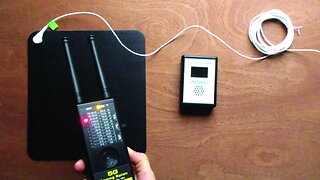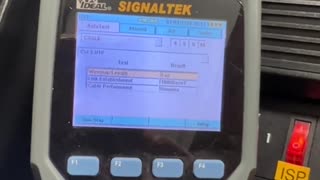What Do CAT Ratings Mean?
There are many different types of meters available for us electricians to use. Multimeters, Amp Clamp meters, Hot Sticks, etc. But what are the different CAT ratings for on these meters? In the latest episode of Electrician U, Dustin discusses what the different CAT ratings are for as well as talk about a few different Multimeters available from Klein Tools.
⚡🔨SPONSOR: KLEIN TOOLS🔨⚡
https://www.kleintools.com/
🤘⚡️MEMBERSHIP⚡️🤘
JOIN ELECTRICIAN U - become a member and get:
FREE Continuing Education every year
FREE Practice Exams
FREE Monthly Video Courses
FREE Weekly Live Instructor-Led Classes
FREE Monthly Educational Newsletter
Premium Members-Only Content
Private Discord Channel
Monthly Members-Only Discord Chats
Sign up here --- https://www.electricianu.com/electrician-u-membership/
🎧🎹MUSIC AND VIDEO:🎹🎧
https://www.facebook.com/descantmv
🎬✍️ART AND ILLUSTRATION:✍️🎬
https://www.daverussoart.com
To understand what this CAT business is all about, lets talk about a few things first. Each meter is designed to work on a specific voltage range and have a specific amount of current run thru it. If you choose the wrong meter to work on a different range other than intended, it can cause damage to the meter (although most newer meters have fuses inside to protect them from damage). Think about electrical services and available fault current. The closer you are to the source (transformer) the more available fault current there is (a higher amount of current can flow) as there is less impedance to stop it. If the service conductors are short, there is less wire to offer any impedance. Also, on the service conductors, there are no loads yet (motors, devices, etc.) to provide impedance. Meters work in much the same way. Each has a certain amount of impedance built into the meter to be able to have its functions work at a certain range of voltage and or amperage.
So, the CAT rating is simply the voltage/amperage category environment it can be used in. The lower the CAT rating, the lower the voltage/amperage it can be used to test for. Something to keep in mind is that you CAN use a higher CAT rated meter to test in a lower CAT rating environment. So, you could use a CAT 4 rated meter to test in a CAT 2 environment, you just shouldn’t go the other way, or you could risk damage!
CAT 1 meters are the lowest rated meter, with about 30 ohms of impedance and a low voltage range, but these probably won’t be something that you would find readily available, so let’s start with the CAT 2 rated equipment. CAT 2 meters have a bit higher impedance with around 12 ohms and able to handle a bit higher voltage. An example of this is a plug tester that is rated at 300v max. CAT 3 meters are the most common category of meter most electricians have; whether it’s a standard tester, a multimeter, or an amp clamp type of meter. These meters are rated at 600v (so its capable of working at 600v or below) and has an impedance of about 2 ohms. The lower impedance allows more current to flow thru them and at a higher voltage. These types of meters at this CAT rating should work well for most applications that most of us electricians run into daily. Three phase distribution, lighting panels, and the like are things these meters are made for. CAT 4 meters have roughly the same impedance as CAT 3 (around 2 ohms) but allows you to use them up to 1000v.
Meters can also come with several different options depending on which meter you select. Some have backlit displays (so it’s easier to see the readings), some allow you to HOLD the reading, some are even auto ranging (so you don’t have to manually select what voltage/amperage range you are working on, the meter is smart enough to figure it out!!). Amperage testing is another option as is temperature readings.
Always choose a quality meter and TAKE CARE OF IT as your life depends on it. Meters should be kept separate from your other tools (preferably in a good case or bag) and do NOT belong in the bottom of the toolbox or rolling around in your van! Same with the leads of the meter. They should be inspected regularly, batteries should be changed frequently, and always test on a KNOWN source before attempting to use them on what you are attempting to test.
We hope this has been helpful in understanding the different CAT ratings of meters. Is there a topic you would like to see discussed? Leave a comment in the comment section below and let us know. Please continue to follow Dustin and Electrician U as we are constantly adding new content to assist our followers in being the best electricians they can be!
-
 10:45
10:45
Electrician U
1 year agoHow to Test for Voltage. What is Voltage? Can't You Just Use a Tick Tracer?
1.16K1 -
 1:55
1:55
ALLCHECKOUT
3 months agoHow Can We Measure The Cable Resistance Of A USB-C To USB-C Cable With Fnirsi FNB58?
8 -
 4:51
4:51
Ultimate Tech Hub
2 years agoCONNECT CAT6 CABLE TO JACK - HOW TO
76 -
 6:39
6:39
Electrical Explained For Home Owners!
1 year agoVoltage Explained & How to Test for it using a Multimeter, Pen tester & Non-Contact for home owners.
20 -
 19:59
19:59
Merializer
1 month ago $0.05 earnedAre grounding mats safe? ------------------------------------ Esmog Spion ---- ME3851A -- EMF meters
951 -
 8:47
8:47
Jeff C.
3 years agoCat Scales, Overweight weigh out
17 -
 7:23
7:23
Ultimate Tech Hub
2 years agoCAT6 CABLE RUN THROUGH WALL AND ETHERNET JACK INSTALL - HOW TO
204 -
 4:27
4:27
Electrical Ops
9 months agoCan you splice CAT5 / CAT6 cables?
8 -
 8:28
8:28
Merializer
1 month agoShungite vs EMF meters
521 -
 11:13
11:13
ALLCHECKOUT
3 years agoHow To Measure The Capacity Of A Power Bank With the AVHzY (CT-3 + SM-LD-00) Power Meter?
67